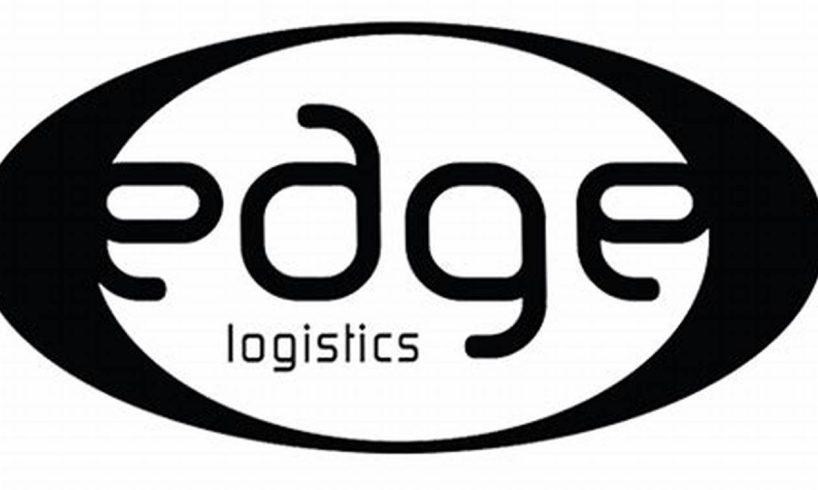
Edge logistics refers to the strategic placement of inventory and resources at the edge of a network, closer to the end customer. This approach aims to reduce latency, improve delivery times, and enhance the overall customer experience.
By leveraging edge logistics, businesses can gain several advantages. Firstly, it enables faster and more efficient delivery of goods to customers, leading to increased customer satisfaction. Secondly, reduced latency and improved network performance contribute to a better user experience for applications and services. Moreover, edge logistics can optimize inventory management, minimizing storage costs and reducing the risk of stockouts.
Historically, logistics operations were primarily centralized, with inventory stored in large warehouses and distributed from a single location. However, the advent of e-commerce, the proliferation of mobile devices, and the increasing demand for real-time delivery have driven the adoption of edge logistics as a more efficient and responsive approach to meeting customer needs.
1. Proximity to customers
In the context of edge logistics, proximity to customers plays a pivotal role in minimizing latency and expediting delivery times. Latency, the delay in data transmission or processing, can significantly impact user experience and overall customer satisfaction, especially in real-time applications and services. By strategically positioning inventory and resources closer to end users, edge logistics aims to reduce the physical distance that data and goods must travel, thereby minimizing latency and enhancing network performance.
Moreover, reducing latency and delivery times is essential for businesses to remain competitive in today’s fast-paced market. Customers expect speedy and efficient delivery of products and services, and businesses that can meet these expectations are more likely to succeed. For example, in the e-commerce industry, fast delivery times can be a key differentiator, influencing customer loyalty and repeat purchases.
Implementing edge logistics solutions enables businesses to fulfill customer orders more quickly and efficiently. By reducing latency and delivery times, businesses can enhance customer satisfaction, improve operational efficiency, and gain a competitive advantage.
2. Efficient inventory management
Efficient inventory management is a key pillar of edge logistics, enabling businesses to minimize storage costs and reduce the risk of stockouts. By leveraging real-time data and analytics, businesses can optimize inventory levels, ensuring that the right products are available in the right quantities at the right time. This not only reduces the cost of holding excess inventory but also prevents lost sales due to stockouts.
One of the key benefits of edge logistics is its ability to improve inventory visibility and control. By placing inventory closer to the end customer, businesses can gain a more accurate and granular view of their inventory levels in real-time. This enables them to make informed decisions about inventory replenishment and allocation, reducing the risk of overstocking or understocking.
For example, a retail company with multiple distribution centers can use edge logistics to optimize inventory levels at each location based on local demand patterns. By leveraging real-time data on sales, inventory levels, and customer orders, the company can ensure that popular items are always in stock at the right locations, while minimizing excess inventory at other locations. This not only reduces storage costs but also improves customer satisfaction by ensuring that products are readily available.
In conclusion, efficient inventory management is a critical aspect of edge logistics, enabling businesses to minimize storage costs, reduce stockouts, and improve overall supply chain efficiency. By leveraging real-time data and analytics, businesses can gain greater visibility and control over their inventory, optimizing their operations and enhancing customer satisfaction.
3. Network optimization
Network optimization plays a crucial role in edge logistics by improving the performance and reliability of applications and services. The proximity of edge devices and data centers to end users reduces latency, the delay in data transmission, which is critical for real-time applications and services. By optimizing the network infrastructure and configurations, businesses can minimize latency and jitter, ensuring a seamless user experience.
For example, a telecommunications company deployed edge computing infrastructure to support its 5G network. By placing edge data centers closer to mobile users, the company was able to significantly reduce latency and improve the overall performance of its 5G services, resulting in faster load times for web pages, smoother streaming of videos, and more responsive gaming experiences.
Furthermore, network optimization in edge logistics enables businesses to improve the availability and reliability of their applications and services. By deploying redundant network links and implementing load balancing techniques, businesses can ensure that their applications and services remain accessible even in the event of network outages or high traffic volumes. This is particularly important for mission-critical applications and services that require constant uptime.
In conclusion, network optimization is a key component of edge logistics, enhancing the performance, reliability, and availability of applications and services. By reducing latency, jitter, and minimizing downtime, businesses can deliver a superior user experience and ensure the smooth operation of their edge computing infrastructure.
4. Scalability
Scalability is a critical aspect of edge logistics, enabling businesses to adapt to fluctuating customer demand and evolving market conditions. By deploying edge infrastructure and resources that can scale up or down as needed, businesses can ensure that they can meet changing customer requirements while optimizing their costs.
- Elastic resource provisioning: Edge logistics platforms can dynamically allocate and de-allocate resources based on real-time demand. This ensures that businesses can quickly respond to spikes in demand without over-provisioning resources during periods of low demand, optimizing resource utilization and reducing costs.
- Flexible infrastructure: Edge logistics infrastructure is designed to be flexible and adaptable, enabling businesses to easily add or remove edge devices and data centers as needed. This flexibility allows businesses to expand their edge presence into new geographic regions or increase capacity in existing locations to meet changing market conditions.
- Cloud-based architecture: Many edge logistics solutions leverage cloud computing platforms, which provide scalability on demand. Businesses can leverage the scalability of the cloud to quickly scale up their edge infrastructure without the need for significant upfront investment in hardware and infrastructure.
- Pay-as-you-go pricing models: Edge logistics providers often offer pay-as-you-go pricing models, which allow businesses to pay only for the resources they use. This flexible pricing model enables businesses to scale their edge infrastructure cost-effectively, avoiding large upfront investments and reducing the risk of overspending.
Overall, scalability is a key enabler of edge logistics, allowing businesses to adapt to changing customer demand and market conditions, optimize resource utilization, and reduce costs. By leveraging scalable edge logistics solutions, businesses can gain a competitive advantage and ensure that they are well-positioned to meet the evolving needs of the market.
5. Flexibility
In the context of edge logistics, flexibility plays a pivotal role in ensuring business continuity and resilience in the face of disruptions and unexpected events. Edge logistics networks are designed to be adaptable and responsive, enabling businesses to quickly adjust their operations and resources to changing circumstances.
- Redundancy and failover mechanisms: Edge logistics architectures often incorporate redundancy and failover mechanisms to ensure that critical services and applications remain available even in the event of hardware or network failures. By deploying multiple edge devices and data centers, businesses can create resilient systems that can automatically redirect traffic and maintain service continuity during disruptions.
- Dynamic resource allocation: Edge logistics platforms can dynamically allocate resources based on real-time demand and system conditions. This enables businesses to quickly scale up or down their edge infrastructure to meet changing needs, ensuring optimal performance and resource utilization. For example, during peak demand periods, edge resources can be allocated to handle increased traffic, while during off-peak times, resources can be scaled down to reduce costs.
- Cloud-based infrastructure: The use of cloud-based infrastructure for edge logistics provides inherent flexibility and scalability. Cloud platforms offer a wide range of services and resources that can be provisioned and de-provisioned on demand, allowing businesses to rapidly adjust their edge infrastructure to meet changing requirements.
- Collaboration and partnerships: Edge logistics providers often collaborate with other vendors and partners to offer complementary services and solutions. This collaboration enables businesses to access a wider range of capabilities and expertise, enhancing their ability to respond to disruptions and unexpected events. For example, partnerships with transportation and logistics providers can facilitate the rapid deployment of edge devices and resources to new locations.
By embracing flexibility in their edge logistics strategies, businesses can build resilient and responsive systems that can adapt to changing circumstances and ensure the continuity of their operations. This flexibility is particularly critical in today’s rapidly evolving and unpredictable business environment.
6. Cost reduction
Cost reduction is a key objective of edge logistics, achieved primarily by minimizing transportation and storage expenses. Traditional supply chains often involve long transportation distances from centralized warehouses to end customers, leading to high transportation costs. Edge logistics addresses this issue by placing inventory and resources closer to end users, significantly reducing transportation expenses. Additionally, by leveraging real-time data and analytics, edge logistics enables businesses to optimize inventory levels and storage space, minimizing storage costs while ensuring product availability.
For example, a leading e-commerce company implemented edge logistics to reduce delivery times and costs. By establishing a network of edge warehouses in close proximity to major population centers, the company was able to reduce transportation distances and delivery times, resulting in significant savings on transportation expenses. Furthermore, the use of real-time inventory data enabled the company to optimize inventory levels at each edge warehouse, reducing storage costs while maintaining high product availability.
The cost reduction benefits of edge logistics extend beyond transportation and storage. By enabling faster delivery times and improved inventory management, edge logistics can reduce the risk of stockouts and the associated costs of lost sales, markdowns, and expedited shipping. Additionally, edge logistics can contribute to sustainability efforts by reducing carbon emissions associated with long-distance transportation.
7. Sustainability
In the context of edge logistics, sustainability is a key consideration, as it aligns with the broader environmental and social responsibility goals of many organizations. By reducing carbon emissions and minimizing environmental impact, edge logistics contributes to a more sustainable and eco-friendly supply chain.
- Reduced transportation emissions: Edge logistics reduces the need for long-distance transportation, as inventory is stored closer to end customers. This reduction in transportation distances leads to lower carbon emissions and a smaller environmental footprint.
- Efficient energy consumption: Edge data centers and devices are designed to be energy-efficient, consuming less power than traditional centralized data centers. This contributes to lower operating costs and a reduced environmental impact.
- Renewable energy sources: Edge devices and data centers can be powered by renewable energy sources, such as solar and wind power, further reducing the carbon footprint of edge logistics operations.
- Sustainable packaging and materials: Edge logistics providers are exploring sustainable packaging and materials to minimize waste and environmental pollution. This includes the use of biodegradable and recyclable materials, as well as optimizing packaging to reduce the amount of materials used.
By incorporating sustainability principles into edge logistics strategies, businesses can not only reduce their environmental impact but also enhance their reputation as responsible corporate citizens. Moreover, sustainable edge logistics practices can contribute to long-term cost savings and operational efficiency, making it a win-win proposition for businesses and the environment.
8. Innovation
Innovation plays a pivotal role in the advancement of edge logistics, as emerging technologies offer the potential to significantly enhance efficiency and optimize operations. By embracing innovation, businesses can gain a competitive edge and deliver superior customer experiences.
- Data Analytics and AI: Edge devices and data centers generate vast amounts of data that can be analyzed using artificial intelligence (AI) and machine learning (ML) algorithms. This enables businesses to gain insights into customer behavior, optimize inventory management, predict demand, and improve decision-making. For example, AI-powered algorithms can analyze real-time data from edge devices to identify patterns and anomalies, enabling predictive maintenance and reducing downtime.
- Blockchain and Security: Blockchain technology provides a secure and transparent way to manage and share data across the edge logistics network. It can be used to track inventory, ensure the integrity of data, and enhance supply chain visibility. Additionally, blockchain-based solutions can improve security by protecting sensitive data and preventing unauthorized access.
- Automation and Robotics: Automation and robotics can streamline various tasks within edge logistics operations, such as inventory management, order fulfillment, and delivery. Automated systems can improve accuracy, reduce labor costs, and increase overall efficiency. For instance, autonomous mobile robots (AMRs) can be deployed in edge warehouses to automate the movement and storage of goods.
- Edge Computing and IoT: Edge computing brings data processing and analysis closer to the edge of the network, enabling real-time decision-making and reduced latency. Combined with the Internet of Things (IoT), edge computing allows businesses to connect various devices and sensors to monitor and optimize edge logistics operations. This enables real-time tracking of inventory, condition monitoring of goods, and predictive maintenance of equipment.
By leveraging these emerging technologies, edge logistics providers can drive innovation and efficiency across the supply chain. Innovation not only improves operational efficiency but also enhances customer satisfaction, reduces costs, and enables businesses to adapt to the changing demands of the market.
9. Customer satisfaction
In the realm of edge logistics, customer satisfaction takes center stage as a key objective. Edge logistics offers several benefits that directly contribute to enhancing the overall customer experience. Let’s explore some key facets of this connection:
- Faster Delivery Times: Edge logistics brings inventory closer to customers, enabling faster delivery times. Reduced latency and optimized delivery routes ensure that customers receive their orders swiftly, leading to increased satisfaction and loyalty.
- Improved Product Availability: Edge warehouses store inventory locally, minimizing the risk of stockouts. Customers can enjoy greater product availability and reduced disappointment, as they are more likely to find what they need when they need it.
- Personalized Experiences: Edge logistics enables businesses to collect and analyze customer data at the edge of the network. This data can be used to tailor product recommendations, provide personalized offers, and enhance the overall customer experience.
- Reduced Costs: Edge logistics can lead to cost savings for businesses, which can then be passed on to customers in the form of lower prices or better value for money. This cost reduction contributes to customer satisfaction and loyalty.
In summary, the benefits of edge logistics, such as faster delivery times, improved product availability, personalized experiences, and reduced costs, all contribute to enhancing customer satisfaction and fostering long-term relationships with customers. By leveraging edge logistics, businesses can differentiate themselves in the market and gain a competitive edge by prioritizing customer satisfaction.
Edge Logistics FAQs
This section addresses frequently asked questions about edge logistics to provide a comprehensive understanding of its key aspects, benefits, and applications.
Question 1: What is edge logistics, and how does it differ from traditional logistics?
Edge logistics involves deploying inventory and resources closer to end customers, leveraging the edge of the network. Unlike traditional logistics, which relies on centralized warehouses and long transportation distances, edge logistics focuses on reducing latency, improving delivery times, and optimizing inventory management by placing goods and resources near demand centers.
Question 2: What are the primary benefits of implementing edge logistics?
Edge logistics offers numerous advantages, including faster delivery times, reduced transportation costs, improved inventory visibility and optimization, enhanced customer satisfaction, and the ability to adapt to changing market demands.
Question 3: How does edge logistics contribute to sustainability efforts?
By reducing transportation distances and optimizing inventory levels, edge logistics minimizes carbon emissions and environmental impact. Additionally, edge data centers can utilize renewable energy sources and sustainable cooling techniques to further enhance sustainability.
Question 4: What technologies play a role in enabling edge logistics?
Edge logistics leverages various technologies such as edge computing, cloud computing, artificial intelligence (AI), and the Internet of Things (IoT). These technologies enable real-time data processing, predictive analytics, automated inventory management, and improved visibility across the supply chain.
Question 5: How can businesses measure the success of their edge logistics implementation?
Key metrics for measuring the success of edge logistics include delivery time improvements, inventory optimization, cost reductions, customer satisfaction levels, and overall supply chain efficiency gains.
Question 6: What are some real-world examples of edge logistics in practice?
Edge logistics is being adopted by various industries. For instance, e-commerce companies use edge warehouses to ensure faster delivery times, while manufacturers leverage edge computing for predictive maintenance and real-time quality control.
In summary, edge logistics offers a range of benefits, from enhanced customer experience and cost reduction to improved sustainability. By embracing edge technologies and strategies, businesses can optimize their supply chains, gain a competitive edge, and meet the evolving demands of the modern market.
Transition to the next article section:
To delve deeper into the practical implementation and case studies of edge logistics, explore the subsequent sections of this article.
Edge Logistics Best Practices
To optimize the effectiveness of edge logistics strategies, consider implementing the following best practices:
Tip 1: Choose Strategic Edge Locations: Carefully select edge locations based on proximity to customers, demand patterns, and transportation infrastructure. This ensures fast and cost-effective delivery.
Tip 2: Optimize Inventory Allocation: Leverage real-time data and analytics to allocate inventory optimally across edge locations. This minimizes stockouts and ensures product availability while reducing storage costs.
Tip 3: Leverage Edge Computing: Deploy edge computing capabilities to process data closer to the edge. This reduces latency, improves decision-making, and enables real-time inventory tracking.
Tip 4: Implement Automated Systems: Automate tasks such as inventory management, order fulfillment, and delivery. Automation improves accuracy, reduces labor costs, and streamlines operations.
Tip 5: Prioritize Sustainability: Incorporate sustainable practices into edge logistics operations. Use energy-efficient technologies, leverage renewable energy sources, and optimize packaging to reduce environmental impact.
Tip 6: Monitor and Measure Performance: Regularly track key metrics such as delivery times, inventory levels, and customer satisfaction. Data-driven insights enable continuous improvement and optimization of edge logistics strategies.
Tip 7: Collaborate with Partners: Establish partnerships with transportation providers, technology vendors, and other stakeholders. Collaboration enhances supply chain visibility, optimizes resource allocation, and fosters innovation.
Tip 8: Stay Updated with Technology Advancements: Continuously explore emerging technologies and innovations in edge logistics. Adopting new technologies can improve efficiency, reduce costs, and enhance customer experiences.
By following these best practices, businesses can maximize the benefits of edge logistics, optimize their supply chains, and gain a competitive advantage in the digital age.
Transition to the article’s conclusion:
In conclusion, edge logistics is a transformative approach that offers numerous advantages. By strategically implementing edge logistics solutions and adhering to best practices, businesses can enhance customer satisfaction, optimize operations, and drive business growth.
Edge Logistics
In conclusion, edge logistics has emerged as a transformative approach that addresses the challenges of modern supply chains. By strategically placing inventory and resources closer to end customers, businesses can significantly reduce latency, improve delivery times, and optimize inventory management. This leads to enhanced customer satisfaction, reduced costs, and increased operational efficiency.
As technology continues to advance and customer expectations evolve, edge logistics will play an increasingly critical role in shaping the future of supply chain management. By embracing edge logistics solutions and adopting best practices, businesses can gain a competitive advantage, drive innovation, and meet the demands of the digital age. Edge logistics is not merely a trend but a fundamental shift in logistics strategies, paving the way for a more responsive, efficient, and customer-centric supply chain.






